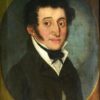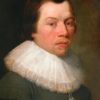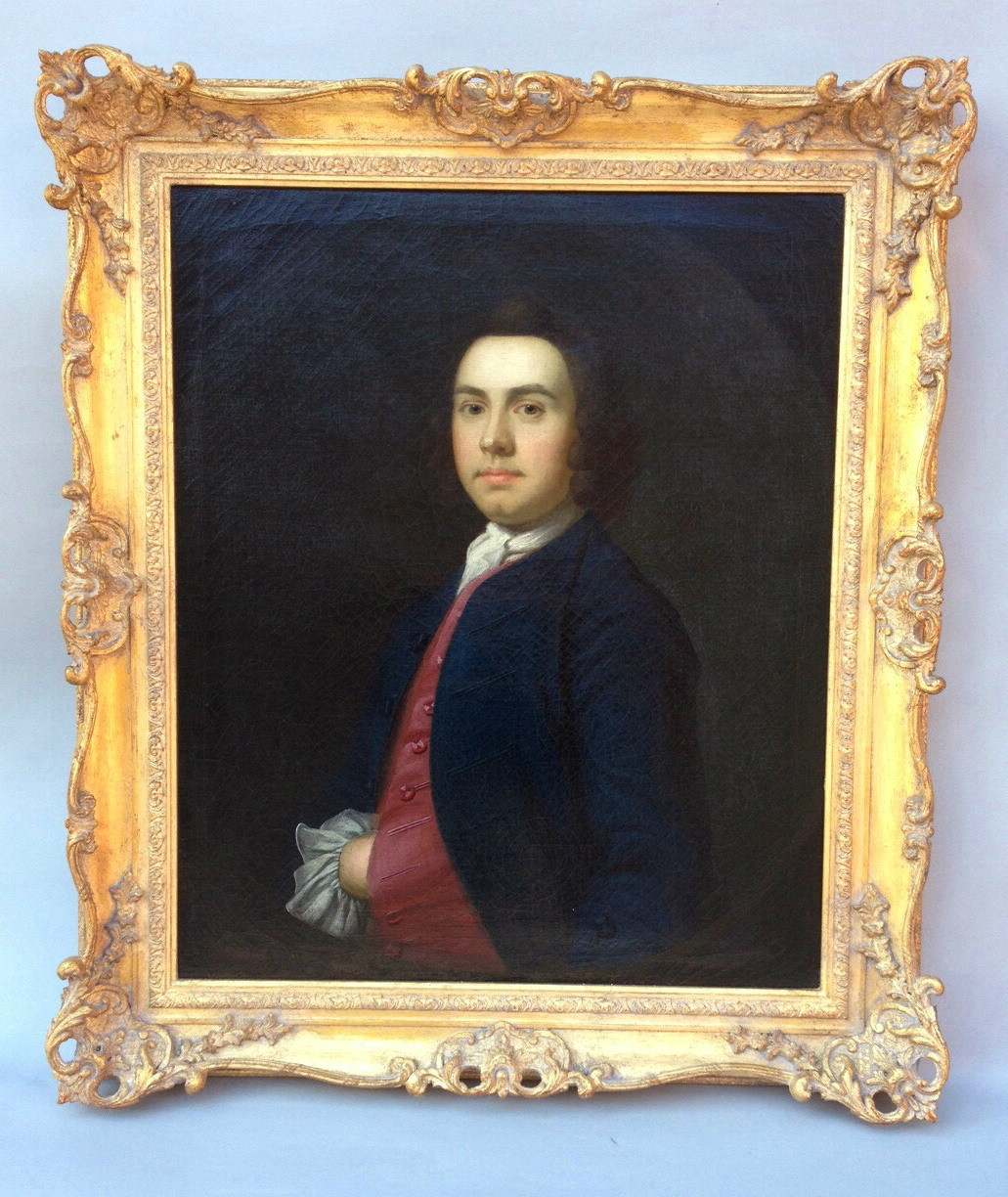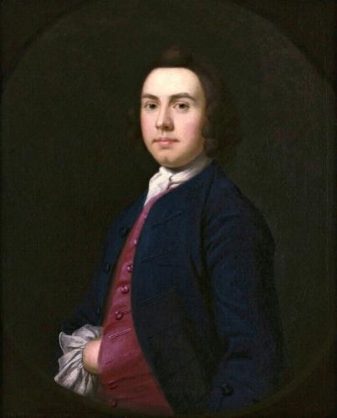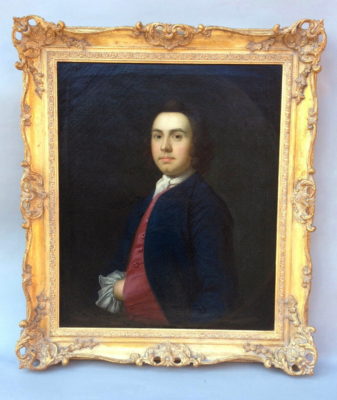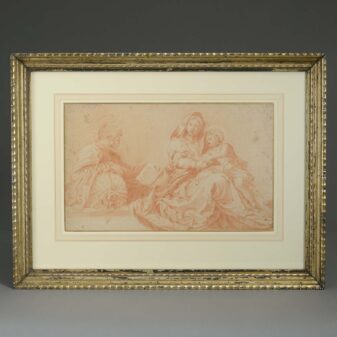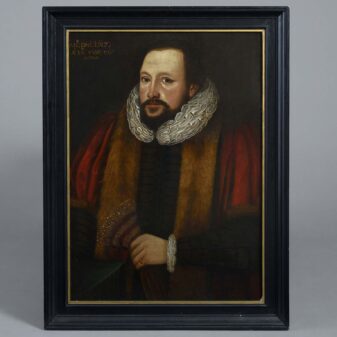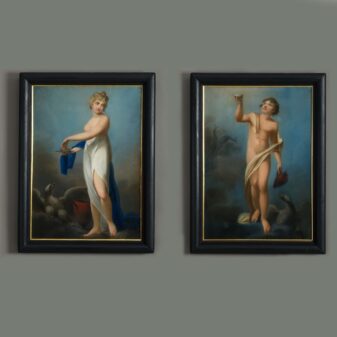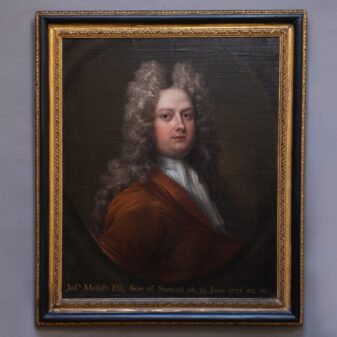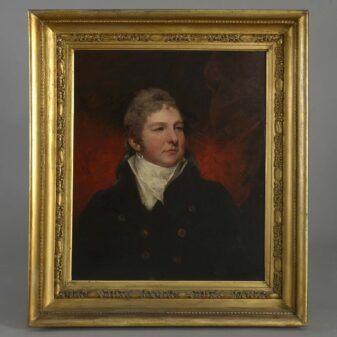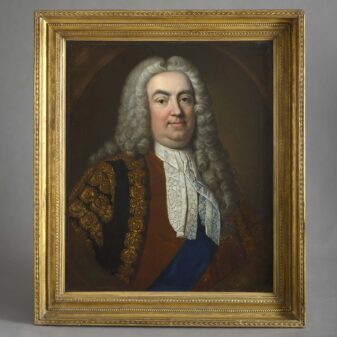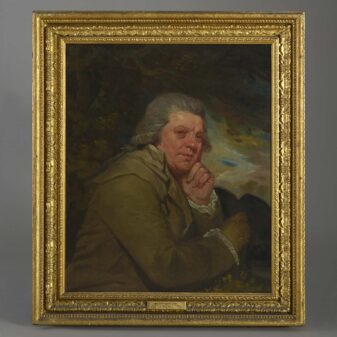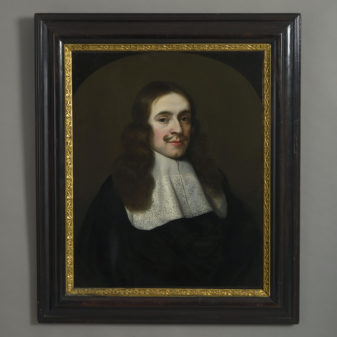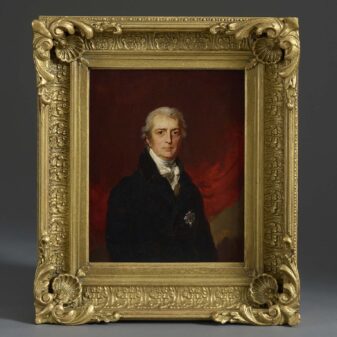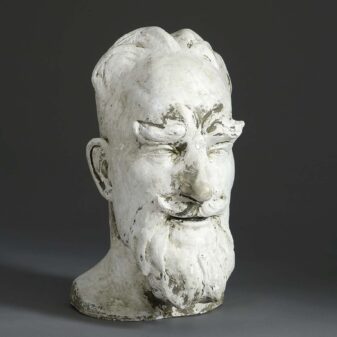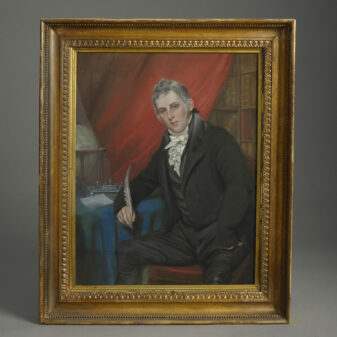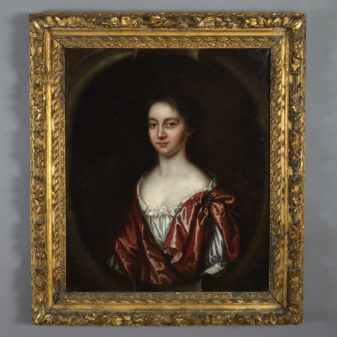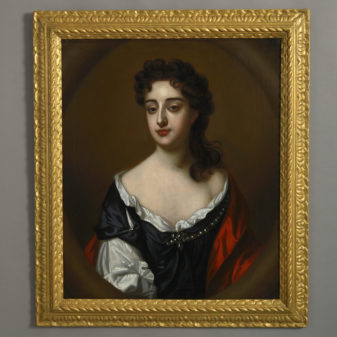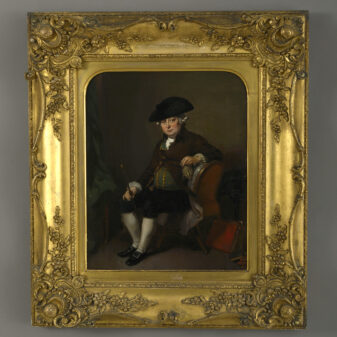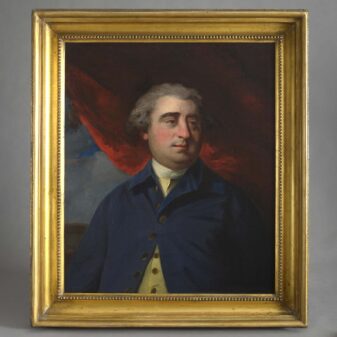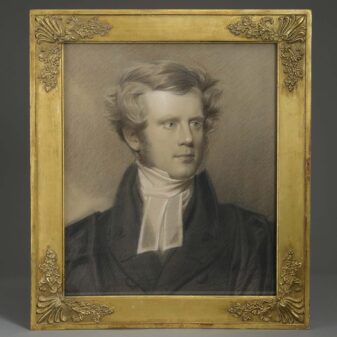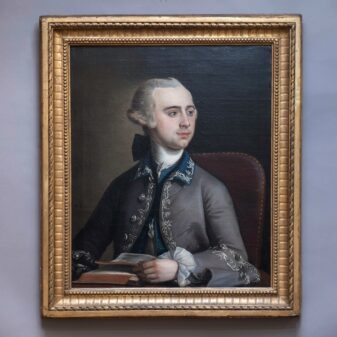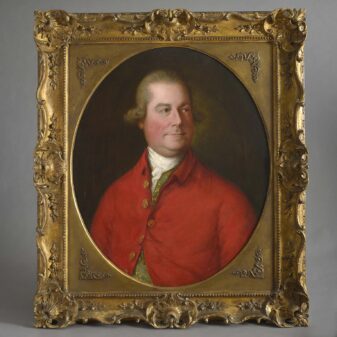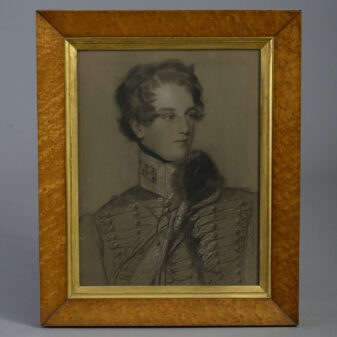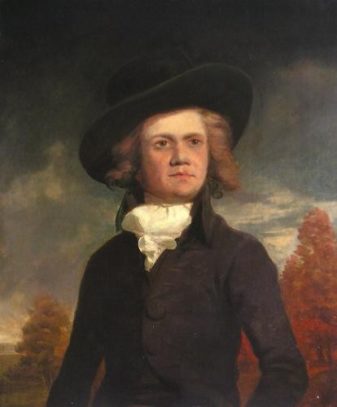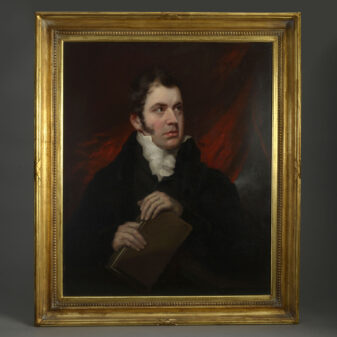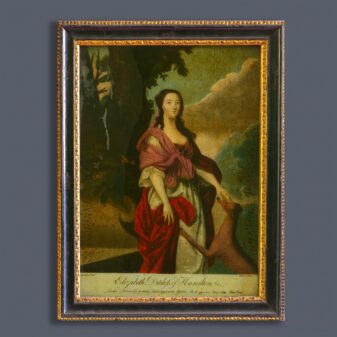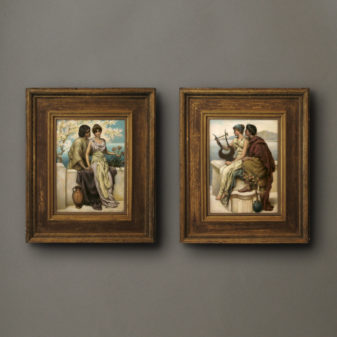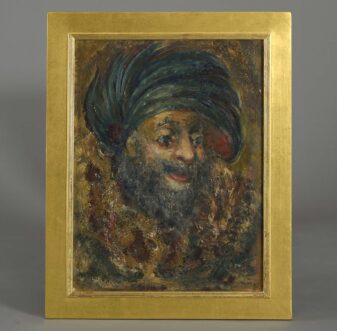William Keable, Portrait of a Gentleman
£5,800
SOLD
Oil on canvas; 30 by 25 in; 76 x 63.5 cm; held in an 18th century style carved giltwood frame
Provenance: Private Collection, England, as possibly Thomas Hudson; Philip Mould – Historical Portraits, 2006; Private Collection, England
Very few works by the painter William Keable are known to have survived and this intriguing portrait, discovered in recent years, is a rare addition to his oeuvre. His life is not well recorded but by the late 1740s he had established himself in London and in 1754 is listed as working at the second St Martin’s Lane Academy where he would have encountered the young Thomas Gainsborough. Indeed there is enough evidence to suggest a friendship and certainly their associations extended to Keable being depicted within a group portrait of the late 1740s along with Peter Muilman and Charles Crokatt. An important early commission for Gainsborough, it is likely that it was instigated by Keable given Crokatt was the son of James Crokatt an important South Carolina merchant whose family friends and business associates, Mrs Benjamin Smith and her brother-in-law Thomas Smith Jr, sat for Keable in London in 1749 (Gibbes Museum of Art, U.S.A.). There is evidence to suggest he painted other American colonists from Charleston and might have painted Benjamin Smith himself when he visited England briefly in 1752, however these portraits appear not to have survived. Despite this it is sufficient to assume that Keable became known amongst these increasingly rich and influential merchants and benefitted socially and professionally as a result.
Another Charlestonian, Peter Manigault visited Luxborough Hall, James Crokatt’s English country home in 1750. Possibly at this time Keable was proposed as an artist to paint his portrait, a view expressed earlier, no doubt, by the Smiths in Carolina. However Manigault wrote later ‘I was advised to have it drawn by one Keble, that drew Tom Smith and several others that went over to Carolina, but upon seeing his paintings, I found that though his Likenesses (which is the easiest Part in doing a Picture) were some of them very good, yet his Paint seemed to be laid on with a Trowel, and looked more like Plaistering than Painting, you may guess at the Difference between Ramsay & Keble Painting, by the Difference of their Prices, What Ramsay demands Four & Twenty Guineas for, T’other humbly hopes you’ll allow him Seven.’ As a result of this thinking the commission went to Allan Ramsay instead who completed his portrait in 1751.
It is possible that these disparaging remarks made Keable take note as the portrait presented here displays aspects of composition and finish that is close to Ramsay’s style of the period. The paint is much smoother than Manigault mentions – though his comments are somewhat exaggerated when comparison is made with Keable’s other works – and the clarity of finish distinct and precise, the pose being equally redolent, though it is almost identical to Keable’s confidently rendered self-portrait of a few years earlier. (Yale Center for British Art, U.S.A.). These points therefore suggest a slightly later date for this canvas than previously thought and indicate completion perhaps after Manigault’s portrait.
Maybe due to a lack of steady patronage Keable left for Italy around 1761, perhaps in the belief that he could secure a stable living by depicting young nobles on the Grand Tour in the same way he had briefly established a following amongst American colonists visiting England. In 1770 he settled in Bologna and became a member of the Academia della Clementina where it is recorded he undertook some portrait commissions. He never again returned to England and died in January 1774. Not necessarily consistent, his style appears to vary with it known for him to also paint small full-lengths in the manner of Arthur Devis. Surviving works are scarce, apart from those known in museum collections, with others occasionally emerging on the art market as a greater understanding of his style is appreciated.
Reference: George C. Rogers ‘Evolution of a Federalist: William Loughton Smith of Charleston (1758-1812)’ Columbia, University of South Carolina Press, 1962

